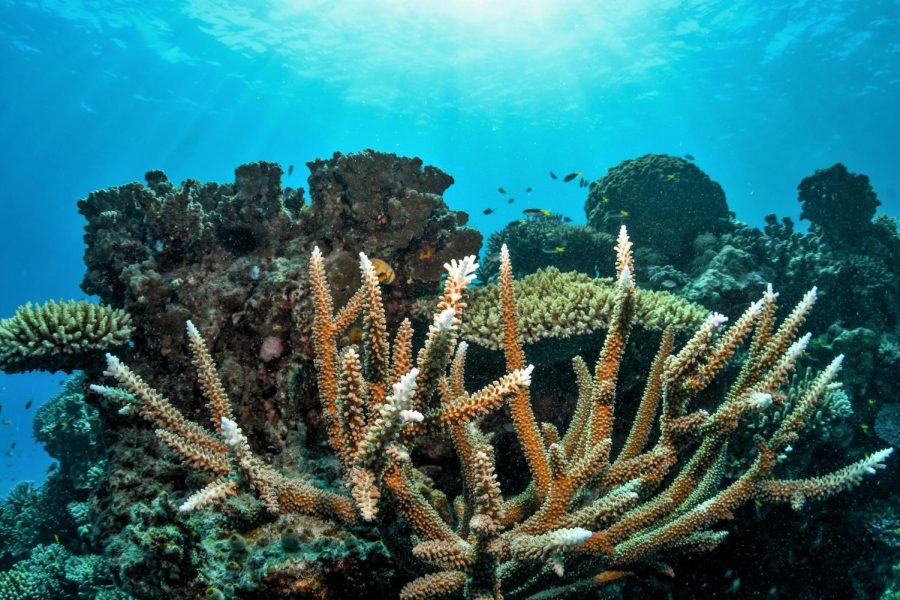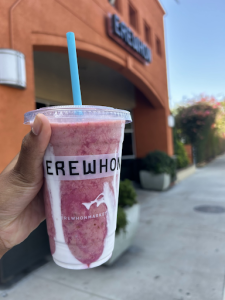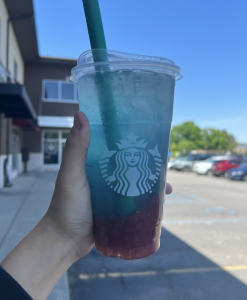Great barrier reef: disappearing wonder of the world
February 24, 2020
It was my first time scuba diving, and it just happened to be at the Great Barrier Reef. The world-famous can-be-seen-from-space Great Barrier Reef. The one in all the biology textbooks for its biodiversity. The one constantly on the news for coral bleaching. The one and only, postcard-worthy Great Barrier Reef.
Most places are a lot more underwhelming in person than in pictures. The Mona Lisa seems way smaller in the Louvre and the Parthenon looks much duller. It’s like tasting skim milk after a lifetime of two percent: not the same. But the Great Barrier Reef? It looked just like the pictures. Maybe even better!
The water was perfectly clear, allowing golden sun rays to penetrate down to the reef, like a curtain shifting chaotically across the rocks. The water was clear, maybe too clear. Though I could see clearly for dozens of meters in any direction, I could also peer over the edge of the reef into the dark waters below. I can only imagine what it would have been like for someone with thalassophobia.
Just like in Finding Nemo, the reef teemed with life. Fish sporting green, yellow and blue darted in and out of the corals. Smaller fish roamed in schools, floating on the current, nervously flicking away from sudden movements. The occasional larger, viola-sized fish slowly roamed around, eyeing the smaller fish menacingly. This, coupled with the fact that I couldn’t hear anything except the bubbles from the regulator and the swirling of water around me, made the dive surreal.
Right now, the Great Barrier Reef is bleaching. This is a phenomenon which occurs when the corals expel the algae that it usually coexist with, due to higher water temperatures. The corals depend on the algae for most of its energy, so when the two are separated, the corals die. Simultaneously, the Amazon is burning. Unprecedented patches of forest being lost every day, razed to the ground.
It was then when I realized the fragility of it all. According to the National Oceanic and Atmospheric Administration, a coral can yield just between 0.3 to two cm of growth annually. A thoughtless kick can take out centuries of growth.
That is why it is important that we must save these unique, irreplaceable spaces now. Without protection, places like the Great Barrier Reef will be, at best, changed forever and at worst, completely destroyed. It is our duty to take action now.
There are many avenues of change. I’m sure you’ve all heard of the standard things you can do on an everyday basis, such as turning off lights when you don’t need them, or reusing different items, or eating less meat. You could even start writing to your local members of Congress to help promote change.
However, many of the small tips to save the environment are based on individual choices made by people. One person living even with close to zero waste cannot balance out the consumption of 7.5 billion people. Even congressmen are swayed by the majority of the constituents they represent.
Therefore, the most important thing to help combat climate change is to raise awareness of the subject. You can educate those around you to know both the importance and urgency of the matter. This can create a cascading effect — the more people who participate to save the environment and the more impact small changes to each person’s lifestyle has, the higher chance your member of Congress will decide to stand up for the environment.
It is our generation’s duty to defend the environment. The clock is ticking, and once we’re past a certain point, there will be irreversible damage done to the world’s biosphere. On our current trajectory, Earth is headed towards climate catastrophe. So let’s save the Great Barrier Reef, and let’s save the Amazon, and let’s save resources and energy where we can. It’s time to act. After all, if not us, who? If not now, when?











